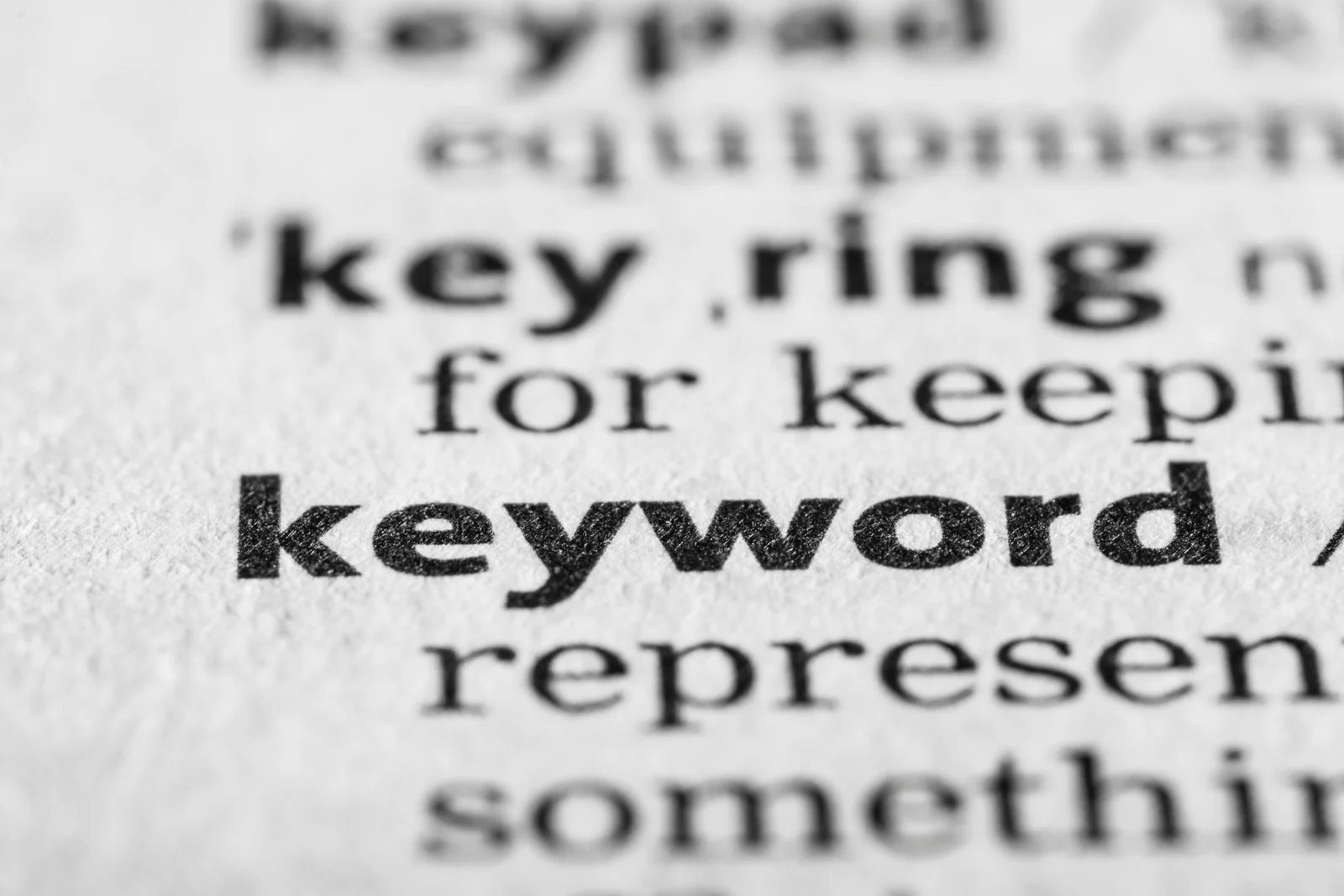If you’ve ever had a Google Ads rep or platform notification nudge you to “add 25+ keywords per ad group,” you’re not alone. It’s advice many business owners and marketing managers hear when first setting up their campaigns. But here’s the truth: bigger keyword lists don’t always mean better results—especially when compared to targeted keywords in Google Ads, which deliver more qualified traffic and better ROI.
This post breaks down why a leaner, more focused keyword strategy will almost always outperform a bloated list—especially if you’re running a small-to-medium campaign with limited spend. Think of it this way: if you had to speak to a room of 10 people, would you tailor your message carefully or shout something vague in hopes that someone listens? Paid search is no different. And this is exactly where a strategy built around targeted keywords in Google Ads gives you a competitive edge, helping you connect with buyers who are already close to taking action.
The Myth of Keyword Quantity
One of the most common pieces of advice small business owners hear when setting up Google Ads is to “add more keywords.” Whether it comes from a well-meaning Google rep or one of the platform’s automated suggestions, this guidance almost always leans into volume over strategy. And while it may sound logical, more keywords mean more visibility, right? The reality is much messier.
Google profits when more people click on ads. So when it encourages you to increase your keyword count, it’s doing so to maximize ad exposure. But this comes at a cost to your precision. Think about it: if you’re running ads for a boutique home renovation firm, adding broad keywords like “home,” “design,” or “contractor” might get you more impressions, but they won’t necessarily bring in qualified leads. Someone searching “home ideas” isn’t the same as someone searching “kitchen remodelers in Denver.”
The more keywords you add, especially with broad match types, the less control you have over who sees your ad. You risk your campaigns showing up in unrelated searches, driving up costs without delivering value. In the worst cases, you might be paying for clicks from users who have zero interest in what you’re selling. It’s the advertising equivalent of handing out flyers to everyone in the mall and hoping one of them walks into your store.
The Reality: Why Targeted Keywords in Google Ads Outperform Big Lists
Now let’s flip the script. Imagine narrowing your keyword list to only the most relevant, high-intent search terms. For example, if you’re running a tax advisory service, you’d be better off targeting phrases like “CPA for freelancers” or “file quarterly taxes help” rather than just “taxes” or “money.” Why? Because these longer-tail, more specific queries signal intent. The searcher knows what they need, and your ad can meet them there.
A focused keyword list isn’t just about conversions; it’s about control. When you limit your list to truly relevant phrases, your entire campaign gets sharper. Your ads speak more directly to the searcher. Your landing pages align more closely with their query. Your Quality Score improves, which lowers your cost-per-click (CPC) and boosts ad placement. And perhaps most importantly, your reporting becomes clearer, allowing you to identify what’s working and optimize faster.
The beauty of a high-quality, lean keyword set is that it allows for better testing and iteration. You can match ad copy to user intent, segment your campaigns more effectively, and ultimately improve ROI. It’s like building a boutique instead of a department store: smaller selection, but everything fits perfectly.
The Hidden Cost of Bloated Keyword Lists in Google Ads
It’s easy to assume that a larger keyword list equals more opportunities, but the hidden costs of this approach can be significant, especially for advertisers working with limited budgets. When you spread your daily ad spend across dozens or hundreds of keywords, you dilute your learning. Each keyword gets fewer impressions, fewer clicks, and ultimately provides less meaningful data.
This lack of focus can lead to multiple inefficiencies. First, your ads become less relevant, which results in lower click-through rates and higher costs. Second, your campaigns generate more “junk traffic” users who were never going to convert but clicked anyway. Third, with so many keywords to monitor, it’s easy to miss patterns, ignore top performers, or fail to spot the underperformers.
Then there’s the issue of negative keywords. The more bloated your keyword list, the harder it becomes to properly maintain a list of exclusions. You may find yourself unknowingly paying for search terms that have nothing to do with your business. This not only affects profitability but creates friction when trying to diagnose campaign performance.
Ultimately, the cost of too many keywords isn’t just financial, it’s strategic. You waste time chasing clicks that won’t convert, rather than investing in a system that reliably brings in the right traffic. In a competitive PPC environment, that kind of waste adds up quickly. It’s also why we prioritise building ad groups around targeted keywords in Google Ads, instead of flooding campaigns with fluff.
How Pros Build Targeted Keyword Lists in Google Ads
Professionals don’t start by asking how many keywords they can cram into a campaign. They start by asking, “Who is this campaign for, and what do we want them to do?” That clarity drives everything. A pro knows that 10 well-researched, high-intent keywords often outperform 50 generic ones, especially when paired with the right match types and ad creative. That’s why we build every campaign around targeted keywords in Google Ads, ensuring your ads reach real buyers, not just browsers.
There’s a framework many PPC experts use:
- Relevance: Is the keyword aligned with your product or offer?
- Intent: Does the keyword reflect where the customer is in the buying journey?
- Specificity: Does the keyword attract users who know what they want?
- Volume: Is there enough search activity to justify the term?
Once the initial list is built, it’s segmented into tightly themed ad groups. This enables precise message matching and cleaner performance data. And because the lists are short, testing becomes faster and more impactful. You can iterate on ad copy, refine landing pages, and introduce negative keywords, all with less noise in the system.
What Google Doesn’t Tell You
Google wants your campaigns to scale. That’s not inherently a bad thing, but it means their advice is often geared toward increasing spend rather than improving ROI. Automated suggestions will often push you toward broader targeting, more keywords, and looser controls under the guise of “machine learning.”
But machine learning is only as good as the data it’s fed. If your keyword list is full of noise, the algorithm will struggle to optimize effectively. Instead of zeroing in on your best prospects, it experiments broadly—and you foot the bill.
Google doesn’t profit from your efficiency; it profits from your volume. And while many of their tools are genuinely helpful, they don’t know your margins, your ideal customer, or your marketing goals. That’s why savvy advertisers take recommendations with a grain of salt and build campaigns that reflect their business realities—not just what the platform promotes.
Conclusion: The Power of Focus
Running Google Ads successfully isn’t about who can shout the loudest. It’s about who can listen best—and speak directly to the people who matter. In the world of paid search, clarity beats complexity, and focus beats noise.
So before you add another dozen keywords to your ad group, ask yourself: Do I really need more reach, or do I need better intent? Do I want more clicks, or more conversions?
Start small. Stay relevant. Monitor closely. Scale slowly.
That’s how real pros run Google Ads.
Need help auditing your current keyword list or rebuilding a more effective campaign? Reach out to us here.

